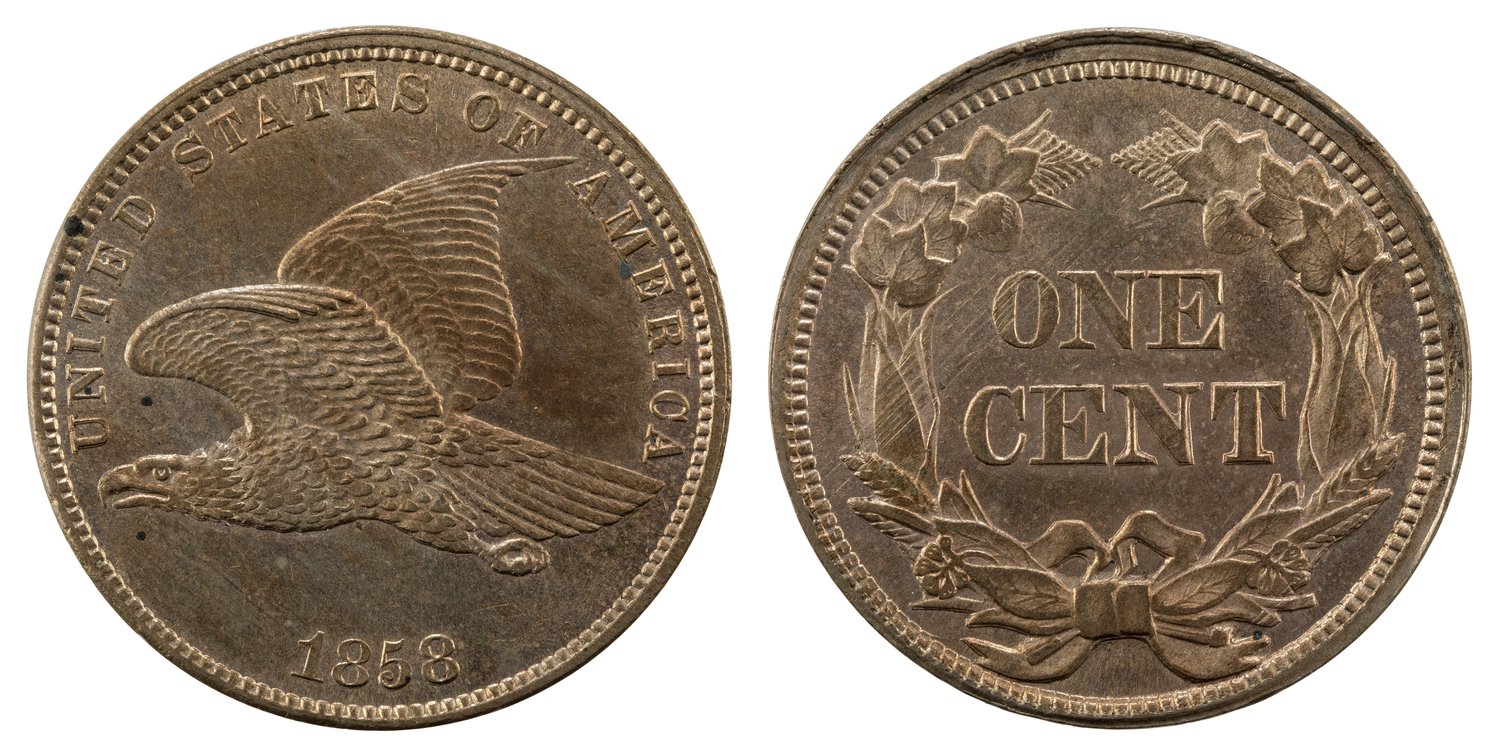The Flying Eagle cent was the first small cent coin produced by the United States Mint. It was produced from 1856 to 1858, and it was designed to replace the larger half cent coin. The Flying Eagle cent was about the same size as the modern-day Cent. It was made of 88% copper and 12% nickel, and featured an image of an eagle in flight on the front and a wreath on the back.
The design of the Flying Eagle cent was created by James B. Longacre, Chief Engraver at the US Mint at the time. Longacre based the design of the coin on the Gobrecht dollar, which was a silver coin that had been produced by the Mint in the 1830s. Legend has it that the eagle shown on the obverse was a tame bird named Peter fed by Mint employees in the early 1830s. Unfortunately, Peter suffered an accident, getting caught in machinery and killed. Peter was stuffed and is on display at the Philadelphia Mint.
The front of the coin (also known as the obverse) featured an image of an eagle in flight, with its wings spread out and its body facing to the left. The eagle was surrounded by the inscription “UNITED STATES OF AMERICA.”
The back of the coin (also known as the reverse) featured a wreath made of agricultural crops, such as corn, wheat, and tobacco. The wreath was surrounded by the inscription “ONE CENT” at the top and “1856” at the bottom, indicating the year the coin was struck. The design of the wreath on the Flying Eagle cent was based on the wreath that appeared on the Gobrecht dollar, which was a silver coin that had been produced by the Mint in the 1830s.
Overall, the design of the Flying Eagle cent was intended to be simple and easy to reproduce, as the Mint was looking to increase its production efficiency by reducing the amount of time and resources needed to produce each coin. The image of the eagle in flight was meant to symbolize the strength and power of the United States, while the wreath on the back represented the nation's abundance and prosperity.
The Flying Eagle cent was well-received when it was first officially released in 1857, and it helped to improve the Mint's production efficiency by reducing the amount of copper needed to produce each coin. The small number released in 1856 to congressmen and other officials were actually considered pattern pieces and not official coinage since congress had not yet approved of the coin.
The Flying Eagle cent was only produced for a few years, and was replaced by the Indian Head cent in 1859. The Indian Head cent was also designed by James B. Longacre and featured an image of a Native American man on the front and a wreath on the back. It was produced until 1909, when it was replaced by the Lincoln cent, which is still in circulation today. To learn more about this great hobby, read Quick Guide to Coin Collecting, 2nd Edition.



